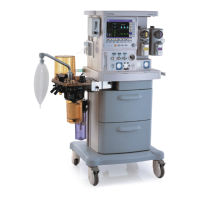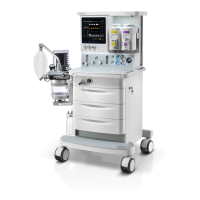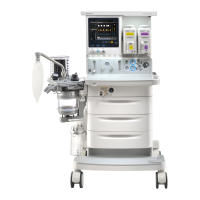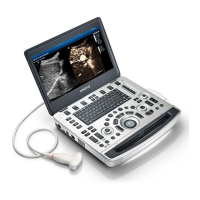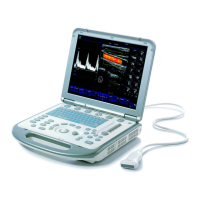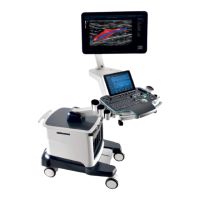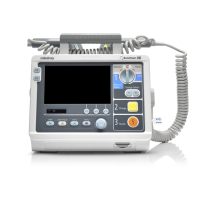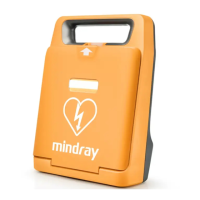4-33
6. Set the APL valve to 15cmH2O。
7. Set the air flow to 5 L/min using the flow control valve. Adopt O2 flow if there is no air
flow.
8. Squeeze the breathing bag once every 10 seconds to expand and contract the test lung,
and generate a pressure about 20cmH2O.
9. Verify the inflation and deflation of the test lung.
4.13.2 Manual Mode Ventilation Test
1. Set the mechanical Auto/Manual switch to the Manual position. Press the screen to
switch the system to the manual mode.
2. Set the APL valve to 25 cmH2O. Push the O2 Flush button to fill the breathing bag.
3. Set the air flow to 1 L/min using the flow control valve.
4. Squeeze the breathing bag once every 3 seconds.
5. Verify the inflation and deflation of the test lung.
6. Verify that a PAW waveform and all numeric values appear on the screen during bag
compressions.
7. Stop squeezing the breathing bag and set the APL valve to the open position (SP).
4.13.3 VCV Adult Ventilation Mode Test
1. Attach a breathing circuit and breathing bag.
NOTE
For testing purposes always use a reusable breathing circuit.
2. Attach an adult test lung to the Y-piece of the breathing circuit.
3. Attach a ventilation tester between the expiratory port and the breathing hose.
4. Select Air in [Balance Gas] and single-tube flow in [Fresh Gas Control]. Set the O2 flow
to 2 L/min and disable the air flow rates.
5. Set the Auto/Manual switch to the Auto position.
6. Set breathing parameters under standby mode.
Parameter Setting
Patient Size Adult
Ventilation Mode VCV
Vt 600
Rate 8
I:E 1:2
Tpause 10
PEEP Off
Plimit 50
7. Press the [Set Mode] button to exit standby mode and begin ventilation.
8. Verify that the pressure waveform, respiratory capacity, mean or plateau pressure,
respiratory rate, and minute ventilation appear on the screen.
9. Verify that the tidal volume displayed on the ventilation tester is within 7% (±42 mL) of
the set value within approximately the first 1 minute after ventilation starts.

